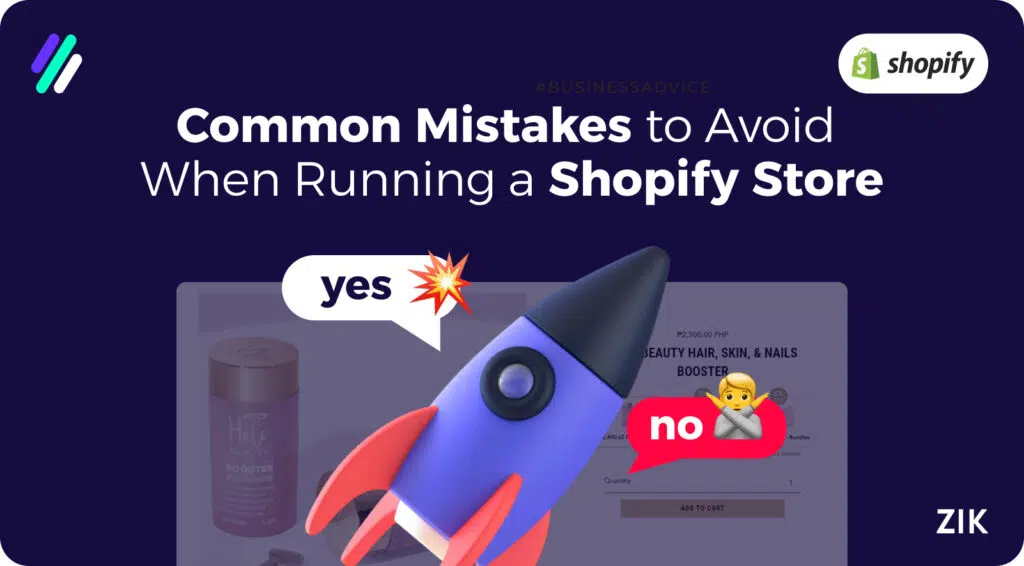Imagine this: you’ve spent time and effort to launch your Shopify store. You envision it to succeed, as any store owner would. You feel pretty good, but days, weeks, and months have passed.
You haven’t hit your sales target yet, and you don’t have enough website traffic. Scenarios like this leave you scratching your head, wondering what you could have done wrong. No need to guess – this guide breaks down the common mistakes to avoid when running a Shopify Store!
Before you get too hard on yourself, everyone makes mistakes.
Let me tell you that I was once guilty of committing these mistakes! I’ve been through all that, from poor customer service due to a lack of training to an online store design that lacked user experience insights.
So, before you launch your online business on Shopify, read this guide so you don’t commit the same mistakes I’ve made!
In this guide, I will share the most common Shopify mistakes that I see many online store owners commit and the ones I’ve done myself.
If you don’t want to see your Shopify stores fail, learn about these mistakes and discover how to overcome them!

Key Takeaways
- Many store owners fail in their business because of committing the most common mistakes to avoid when running an online store.
- Launching a store without a business plan or a marketing strategy will increase a store’s chances of failing.
- Failure to consider the design and functionality of the website puts it at risk of failing.
- Market and product research will help validate your business idea and products to overcome the common mistake of choosing products that don’t sell.
- Poor customer service is another mistake that many sellers make. Investing in customer service can go a long way toward improving sales performance and promoting customer trust.
Top 11 Common Shopify Mistakes to Avoid
I know it’s a handful: looking at this list of the top Shopify mistakes to avoid might seem daunting. However, running a Shopify store or any ecommerce store is no cakewalk.
To be among the most successful Shopify stores, you must continually learn and adjust your marketing strategy to generate more ecommerce sales.
Let’s get started!
1. Not Having a Business Plan
Every business needs a business plan. A strategic business plan outlines the crucial elements you need to succeed in the ecommerce landscape.
It defines your business goals and creates a detailed guide on what market strategies to employ to help you achieve those objectives.
Many new ecommerce store owners assume that you can sign up to Shopify, launch an online store and you’re good to go!
However, many wake up to the harsh reality that running a Shopify store entails hard work and commitment.
Without a business plan, you’d be like chickens running with their heads cut off!
A business plan outlines every aspect of your business – from product sourcing and selection to logistics and choosing a business model.
Without a business plan, you have no clear vision of what steps to position your ecommerce business best to succeed. It tells you what to do, how to do it, and what mistakes to avoid.
2. Not Knowing Your Ideal Customer
Identifying your ideal customer is a crucial part of your online business success. It is a common mistake many store owners make and one you should try to avoid.
Customers should be at the core of your marketing strategy and advertising efforts.
If you don’t know your potential customers, how can you tailor effective marketing campaigns that appeal to their needs and buying behaviors?
For this reason, identifying your potential customer or target market should be a foundational step in your store’s success.
A clear understanding of the age, gender, demographics, and other essential data insights can help you develop a marketing strategy that would fit into your target buyer’s shopping journey.
It becomes easier to nurture your customer trust and relationship if you know who you’re targeting your marketing campaigns for.
Once you have your ideal customer profile, you can take into account customer behavior and customer preferences when marketing your ecommerce store and its products.
Grab your Shopify dropshipping eBook and find winning suppliers fast!3. Not Validating Your Business Idea
Before launching your Shopify store, it is crucial to validate your business idea. Is it a profitable niche? Is there enough demand in the market for your business type?
Market research is the foundation for building a successful ecommerce store. Without market research, it’s like jumping off a plane hoping for someone to catch you at the bottom.
It is not the best approach if you want your small business idea to thrive and grow.
Market research is especially important if you dive into a niche market. You must determine whether it’s a good fit for your small business.
For example, you want to avoid a niche with too much competition but low demand.
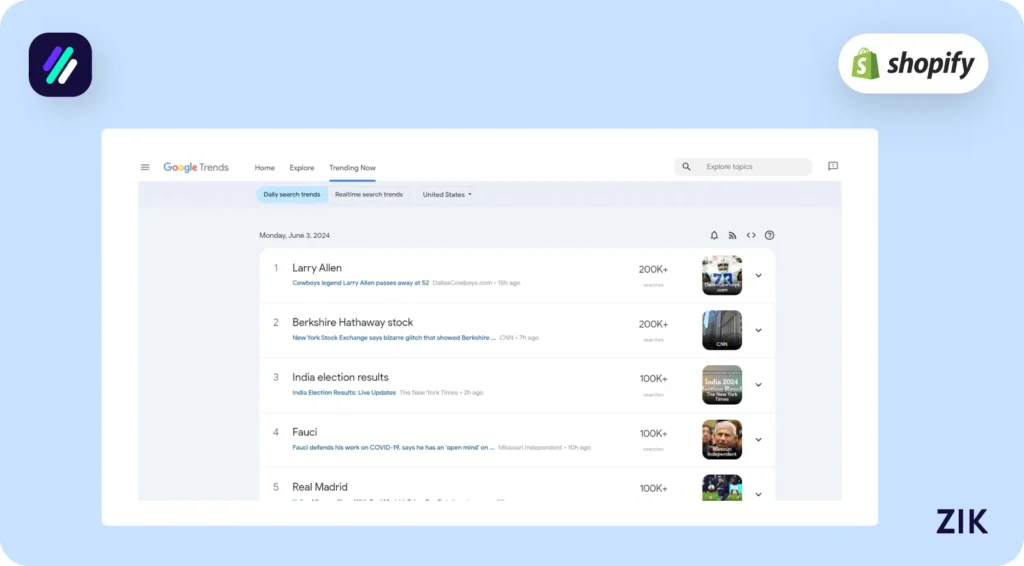
So, what are the key elements to consider when validating your business idea?
You must check the SEO rankings for similar products or businesses. There should be a healthy amount of competition and demand for it.
Next, look at the type of press coverage a niche is getting. You must also look at social proof and the level of engagement within a particular niche.
It is an excellent way to assess the validity of a business idea based on how engaged people are on social media.
Take time to read press releases, blogs, and other websites. Based on the data you’ve gathered, you can assess if it’s a good niche and if you can capitalize on its demand.
4. Not Investing in Niche or Product Research
Aside from validating your business idea, you should also research the niche or products for your Shopify store.
Product research tools like ZIK Analytics enable you to overcome this common mistake and provide relevant and updated data insights to make informed business decisions.

My previous blogs discussed the importance of choosing winning products to maintain your store’s profitability. Product selection is integral to your success because you want to ensure you can attract customers for those products.
In addition, you must analyze other essential data, such as average product price and competition.
You can analyze trends and other relevant data to determine if a product is a valuable addition to your Shopify store. It can also help maintain profit within your store because you have enough sales volume per product.
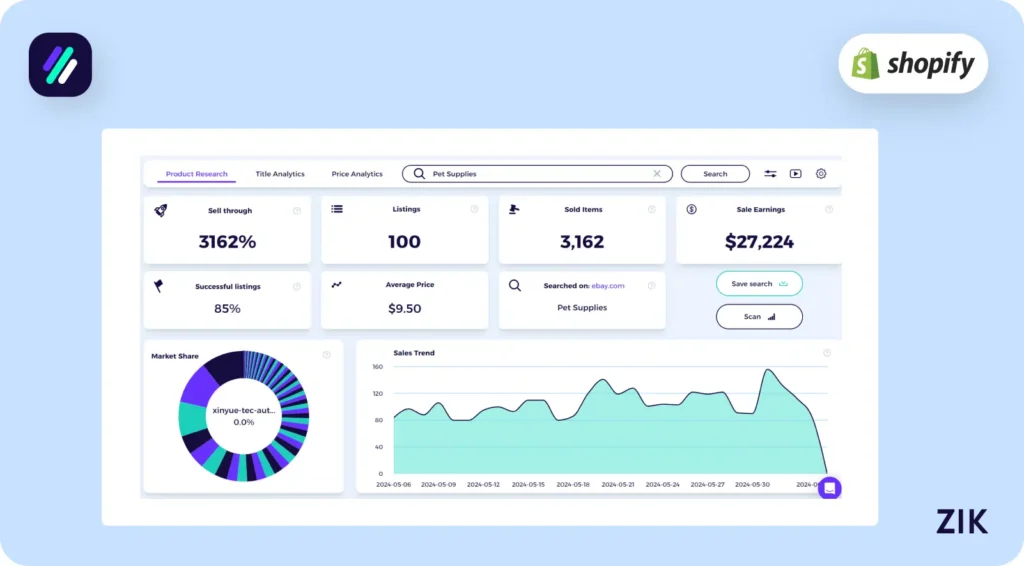
Gone are the days when you chose products to add to your online business website and prayed that you would get more sales. Instead, you can use actual sales data to know what products help boost sales for your ecommerce business.
5. Not Developing a Marketing Strategy
Aside from a business plan, you also need to write a marketing plan. Small businesses spend much time promoting their products online but without success.
So, what could have caused them to fail?
A lack of a marketing plan can put you at risk of failure because you did not analyze your potential customers or target market. With a good marketing strategy, your customers are at the core of every advertising decision.
Let’s say you know who your target customer is. The next step is to determine how to promote your products to them. If your target audience is females between the ages of 20 and 30, you can determine that they are most likely active users on social media.
This information will help you determine that a social media marketing campaign would be ideal for your small business as it will help maximize your reach to potential customers.
You should also consider organic marketing to boost your Shopify stores and drive more website traffic. The lure of paid ads like PPC has been tremendous, so small businesses spend more time paying for ads than optimizing organic marketing strategies.
You will learn about search engine optimization in a little bit, but now is a good time to point out that building a content marketing strategy is critical to driving more website traffic.
For example, you can write blogs relevant to your ideal customer, showcasing how to use or the benefits of a particular product. Focus on educating your audience and establishing your authority in the niche to boost your marketing efforts.
6. Not Focusing on the Shopify Store Design
The design aspect is where many store owners commit mistakes in their Shopify stores. It’s easy to overlook this part because you have spent time and effort choosing products and doing market research.
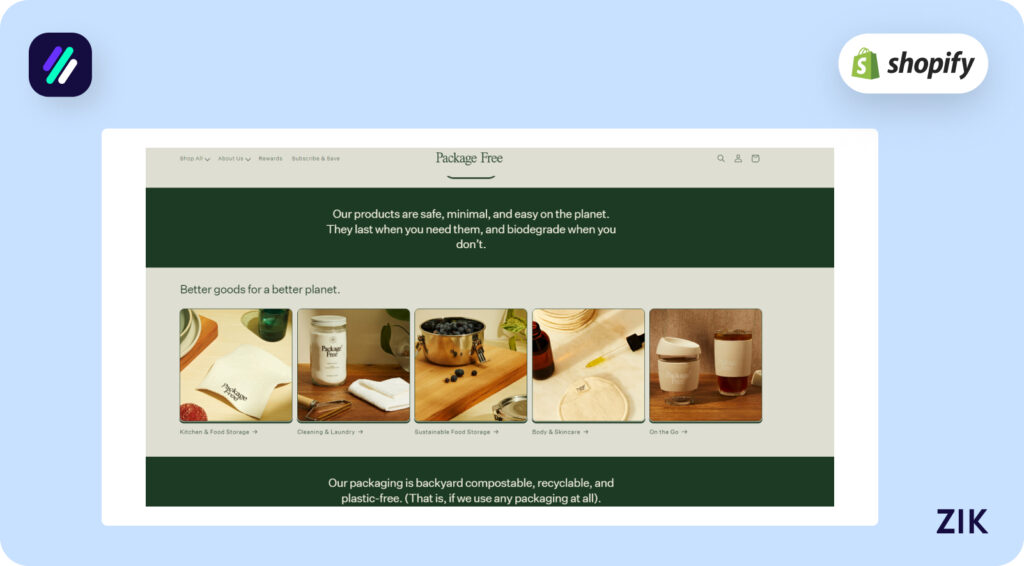
However, first impressions last, and you want to build a visually attractive store design to draw potential customers to your business. Think about it: your website is the face of your brand online.
Thus, consider this when developing your website design. Align it with your brand identity and target customers. It’s how you build integrity as a business while standing out from the competition.
Shopify offers extensive paid or free themes to customize your store’s design. The Shopify platform makes it easy to drag and drop elements to customize the look of your website.
That way, you can make it unique and optimize how you display content on your business website.
In addition, consider the content of your website. Visual aesthetics are important, but how you showcase your products and tell your brand story is also critical to your new store’s success.
Ensure the content flows naturally, and there is enough balance between the text and visual elements.

Speaking of visual elements, invest in high quality images, especially when showcasing your products on the product pages. High quality images can attract customers to buy your products, while low quality images can create a negative impression of your brand.
7. Not Prioritizing User Experience
User experience is important for your Shopify store’s success and is integral to its design. Consider the website’s functionality and how your visitors will use it.
A UX designer can help you build a store with excellent functionality and intuitive use. However, if you cannot afford one, I suggest you study the basics of UX store design to facilitate a smooth shopping experience for your customers.
Is the website easy to navigate?
Or is it difficult for users to find certain information on your website?
Think about the layout and how colors interact with each other, as these factors can impact the overall website functionality. If you fail to consider user experience when designing a website, most users will navigate away from your website, and you could lose customers.
8. Using Too Much (or Too Few) Shopify Apps
Third-party app integration is one of the best ways to optimize your online store’s performance. The best Shopify apps can increase your website’s functionality and make it more efficient to manage your business.
However, you should strive to balance using enough Shopify apps and not too many. In particular, avoid excessive Shopify app integration. This is especially true with new store owners.
They find many apps on the Shopify App Store and assume they need them all. In reality, you only need what is essential for your business.
For example, you can integrate a third-party app to manage your Shopify email marketing campaign. You can also set up a third-party app to customize checkout or inventory management.
Either way, use only the necessary apps.
Too many apps can affect your store’s performance, specifically slowing it down. Having too many plugins and apps installed can increase your page’s loading times and negatively impact store functionality.
On the other hand, not maximizing the use of apps can also prevent your Shopify store from meeting its goals. Leverage the best apps and tools that empower your business and support your marketing efforts.
With the right tools, Shopify stores can be one step closer to reaching their goals.
9. Not Optimizing Your Shopify Store
Search engine optimization (SEO) is one of the best ways to reach your target customers organically. Keywords are at the heart of a solid SEO plan. Not thinking about SEO is one of the top mistakes to avoid for any business, large or small.
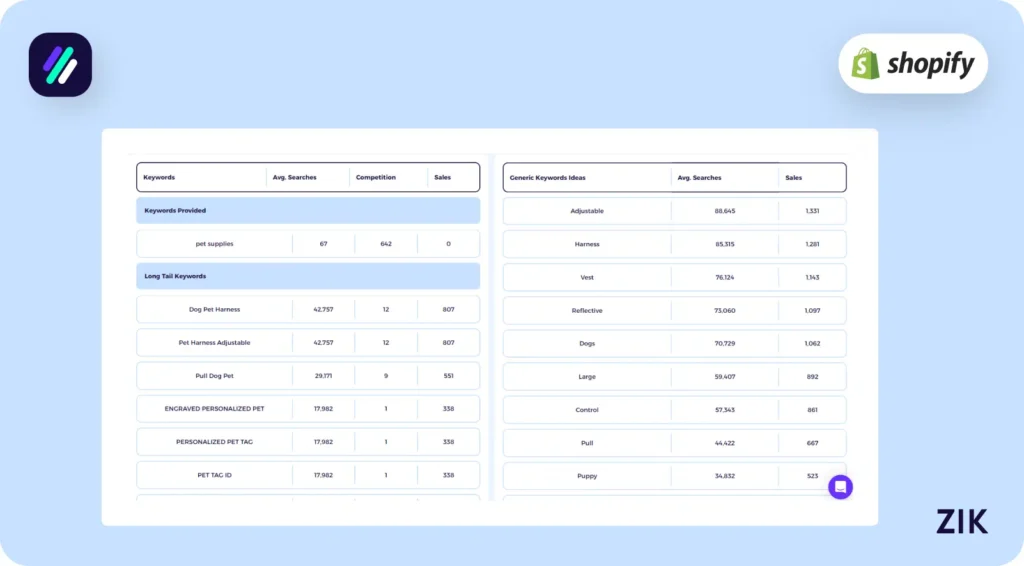
When you launch your Shopify store, it’s important to do keyword research. The goal is to identify targeted keywords relevant to your niche and products.
You can incorporate these keywords in your website copy, product descriptions and titles, content marketing (blogs), and metadata. The idea is to make it easier for the search engine algorithm to assess your website’s authority for a relevant niche.
Your goal is to identify and predict the search terms that potential users will input on search engines to find relevant information or products.
If you’re not optimizing your Shopify store, it’s one of the common mistakes to avoid, making it difficult for customers to find your store.
11. Poor Customer Service
Customer experience is the backbone of any successful business.
If you want your online business to grow, invest in delivering a quality customer experience. On the other hand, businesses with poor customer service are bound to fail, regardless of how good your products are and how well-designed your store is.
The goal of every business is to keep every customer happy and satisfied. All the investment you poured toward your marketing strategies is in vain because of poor customer service.

On the other hand, if you have positive customer testimonials, leverage that and add social proof to your product pages. Let other customers know about the positive feedback you get from other customers.
Summary: Common Mistakes to Avoid When Running a Shopify Store
A new store’s success is never guaranteed. However, researching and adequate planning can prevent your Shopify store from failing.
Understanding why businesses fail is also critical, so you don’t fall down the same path. You can learn from the lessons of businesses from the past to optimize your ecommerce business and thrive despite a competitive market.
The truth is that making Shopify store mistakes is not exclusive to new store owners. Even large businesses or those that have been around for years can still make mistakes.
Your journey as an online business owner is a continuous learning process, and your ability to adapt and learn spells the difference between success and failure.
FAQs
Why do so many Shopify stores fail?
Shopify is a highly competitive ecommerce platform. New stores are always launched, but some are guilty of committing the top mistakes to avoid outlined here.
Therefore, you must learn from the mistakes of other store owners to improve how you run your business for improved chances of success.
How do I make my Shopify store successful?
Know your target audience first. This will help you craft a shopping experience tailored to their unique needs and preferences. It will also boost customer retention, which is critical to maintaining growth and profitability.













